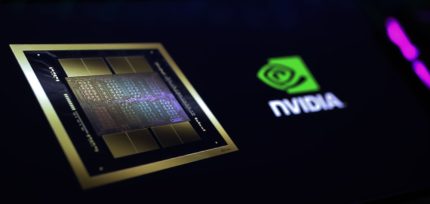Nvidia Faces Uncertainty in China Post Trump-Xi Meeting
Nvidia's return to the Chinese market remains uncertain post Trump-Xi meeting, with U.S. export controls still in place.

Nvidia’s Uncertain Path Back to China After Trump-Xi Meeting
Nvidia, the world’s leading producer of artificial intelligence (AI) chips, faces ongoing uncertainty over its ability to sell advanced processors—including its new Blackwell series—to Chinese customers, despite a high-profile meeting between former President Donald Trump and Chinese President Xi Jinping. CEO Jensen Huang has repeatedly expressed hope to resume significant business in China, a critical market for AI hardware, but U.S. export controls and shifting political winds have left the company’s prospects in limbo. As of late October 2025, no breakthrough appears imminent, with industry analysts and government sources suggesting that Washington remains wary of enabling China’s AI ambitions through unrestricted chip exports.
Background: The Blackwell Chip and U.S.-China Tech Tensions
Nvidia’s Blackwell chips represent the cutting edge of AI computing, powering large language models, data centers, and next-generation applications across industries. The U.S. government, however, has imposed strict export controls on advanced semiconductors to China, citing national security concerns. These restrictions, first introduced under the Biden administration, have been maintained and even tightened under Trump’s renewed leadership, despite Huang’s public optimism about returning to the Chinese market.
In August 2025, Trump made clear that he would not strike a deal with China over NVIDIA’s Blackwell chips, asserting that “no other country would have” such technology. This stance reflects a bipartisan consensus in Washington that AI leadership is a strategic imperative, and that supplying China with high-end chips could erode America’s technological edge.
The Trump-Xi Meeting: No Breakthrough on Chips
The recent meeting between Trump and Xi did not yield progress on semiconductor exports, according to multiple reports. While the two leaders discussed a range of bilateral issues, sources confirm that Taiwan, Russian oil, and the Blackwell chips were not on the agenda. This leaves Nvidia’s hopes for a policy shift unfulfilled, with Huang acknowledging that the ultimate decision rests with the U.S. government, not the company.
Huang has downplayed concerns that China’s AI sector would be crippled without Nvidia’s chips, suggesting that China has “plenty” of its own capabilities. However, industry data tells a different story: China remains heavily dependent on imports for advanced semiconductors, with integrated circuit imports rising nearly 9% year-on-year in the first half of 2025, totaling 281.88 billion units worth $191.4 billion. While Chinese firms like Huawei are making strides in domestic chip design, they still rely on foreign foundries for production, leaving a gap that Nvidia—if allowed—could fill.
Nvidia’s Global Strategy and Production Capacity
Despite the China dilemma, Nvidia continues to dominate global AI chip production. The company is projected to produce 3.67 million Blackwell-equivalent (B300-eq) units in 2025, with output expected to nearly double in 2026. The Blackwell series already accounts for 80% of Nvidia’s datacenter compute revenue, underscoring its importance to the company’s growth. Nvidia’s partnerships with major Asian manufacturers, such as Samsung and SK Hynix, also highlight its strategy to embed its technology across global supply chains, even as it navigates geopolitical constraints.
Industry and Geopolitical Implications
The ongoing export restrictions have significant implications for both Nvidia and the broader tech industry:
- Nvidia’s Growth: While the company’s revenue remains robust, the loss of the Chinese market—historically one of its largest—could limit long-term growth and cede opportunities to domestic Chinese competitors.
- China’s AI Ambitions: Without access to the latest Nvidia chips, Chinese tech firms may face bottlenecks in training cutting-edge AI models, potentially slowing their global competitiveness.
- Global Supply Chains: Nvidia’s partnerships with Asian chipmakers illustrate the complex interdependence of the semiconductor industry, where geopolitical decisions in Washington or Beijing ripple through global markets.
Looking Ahead
The standoff over Nvidia’s chips is a microcosm of the broader U.S.-China tech rivalry. While Huang and Nvidia remain hopeful for a policy shift, there is little indication that the U.S. will relax export controls in the near term. The company’s ability to navigate these challenges—by diversifying its customer base, investing in next-generation technologies, and lobbying for regulatory clarity—will be critical to its future.
For now, Nvidia’s return to China hinges not on corporate strategy or market demand, but on the unpredictable terrain of great-power politics. As both nations vie for AI supremacy, the fate of a single chip series has become a bellwether for the future of global technology leadership.
Key Data and Statistics
- 2025 Nvidia AI chip production: 3.67 million B300-eq units (13.9 million H100-eq)
- 2026 projected production: 6.89 million B300-eq units (26.1 million H100-eq)
- China’s 2025 integrated circuit imports: 281.88 billion units, $191.4 billion (first half)
- Blackwell share of Nvidia datacenter compute revenue: 80%
Conclusion
Nvidia’s ambition to reclaim its position in the Chinese AI chip market remains stalled by geopolitical realities. Despite Huang’s optimism and the company’s technological leadership, U.S. policy continues to prioritize national security over commercial interests. As the AI race accelerates, the Blackwell chip saga underscores how deeply technology and geopolitics are intertwined—and how the fortunes of even the most innovative companies can hinge on decisions made in the corridors of power, not the labs of Silicon Valley.



